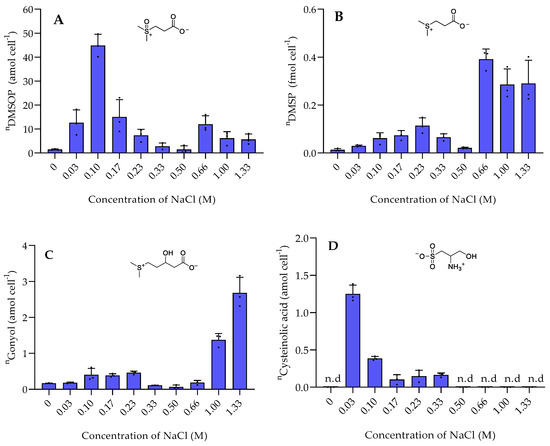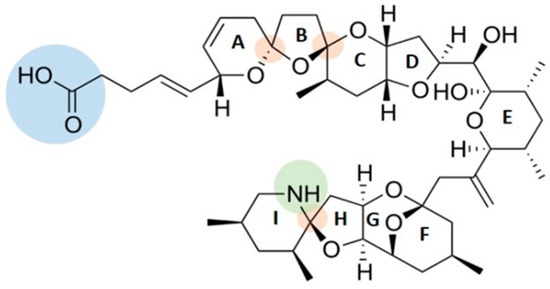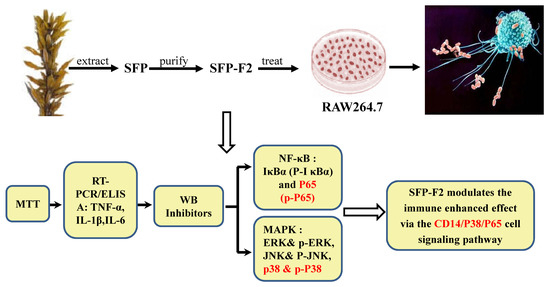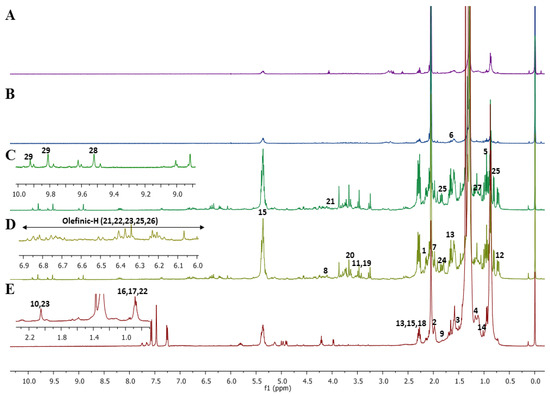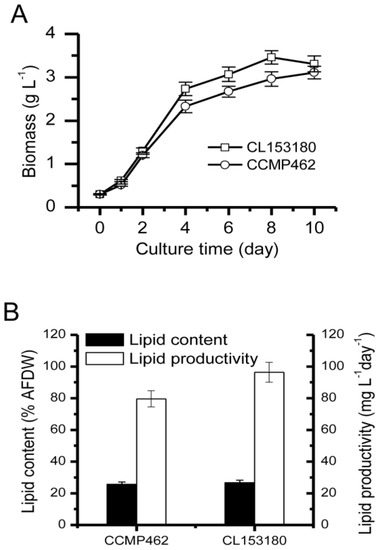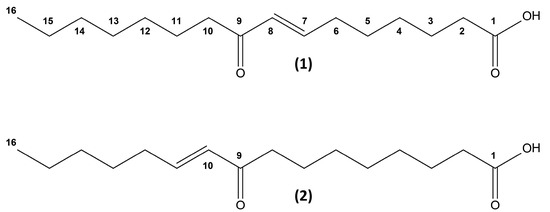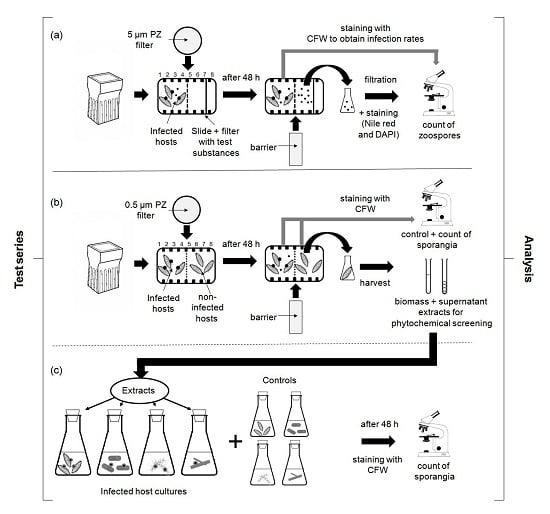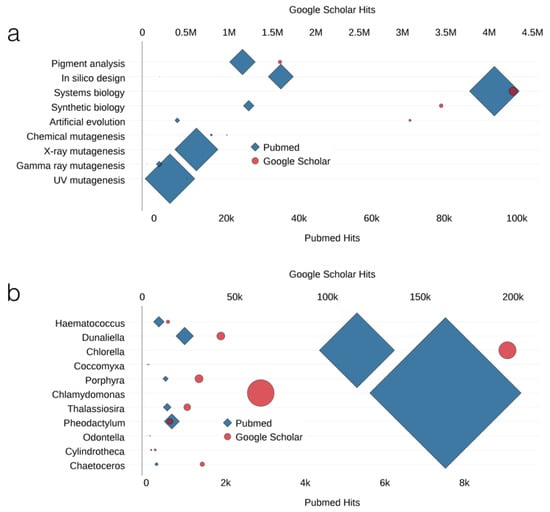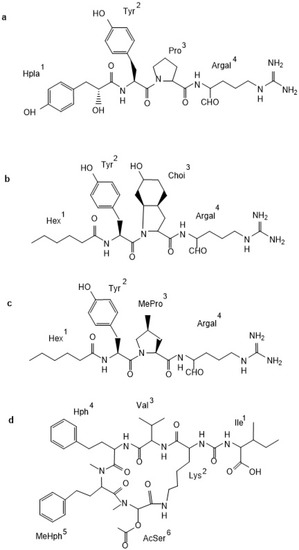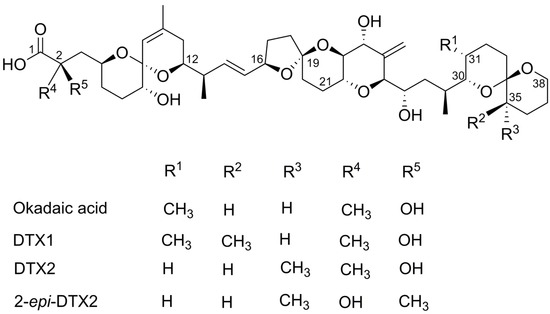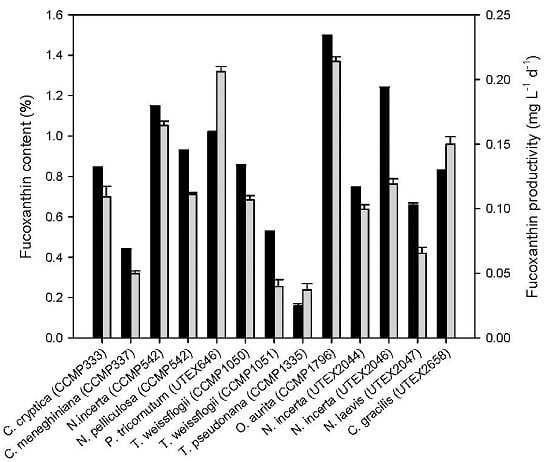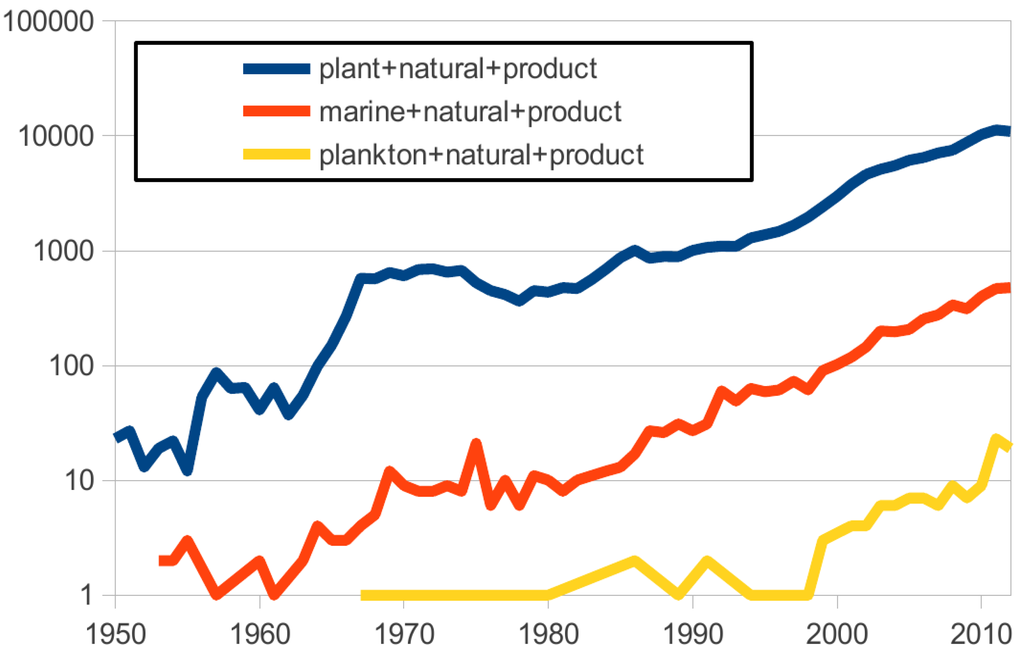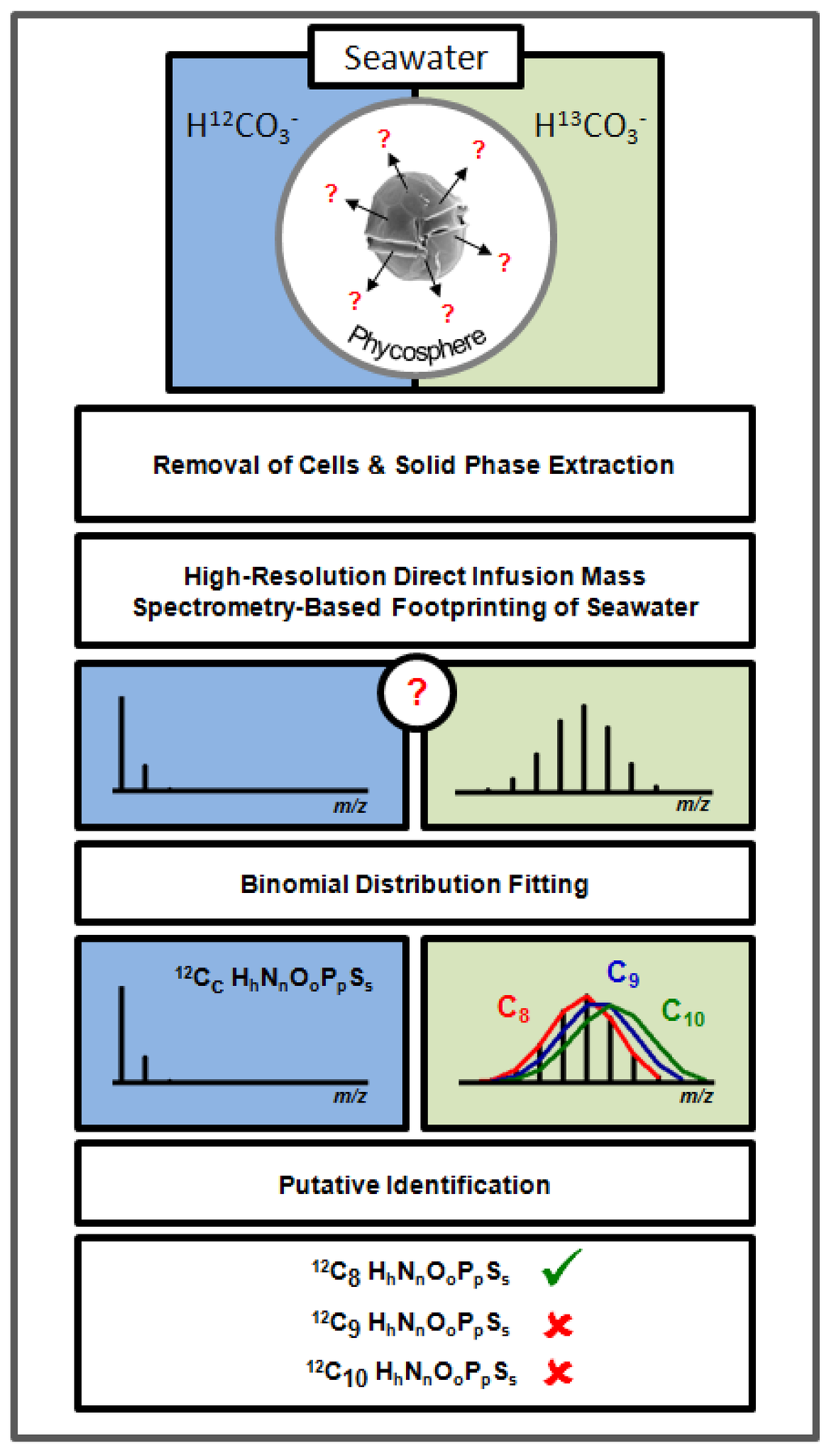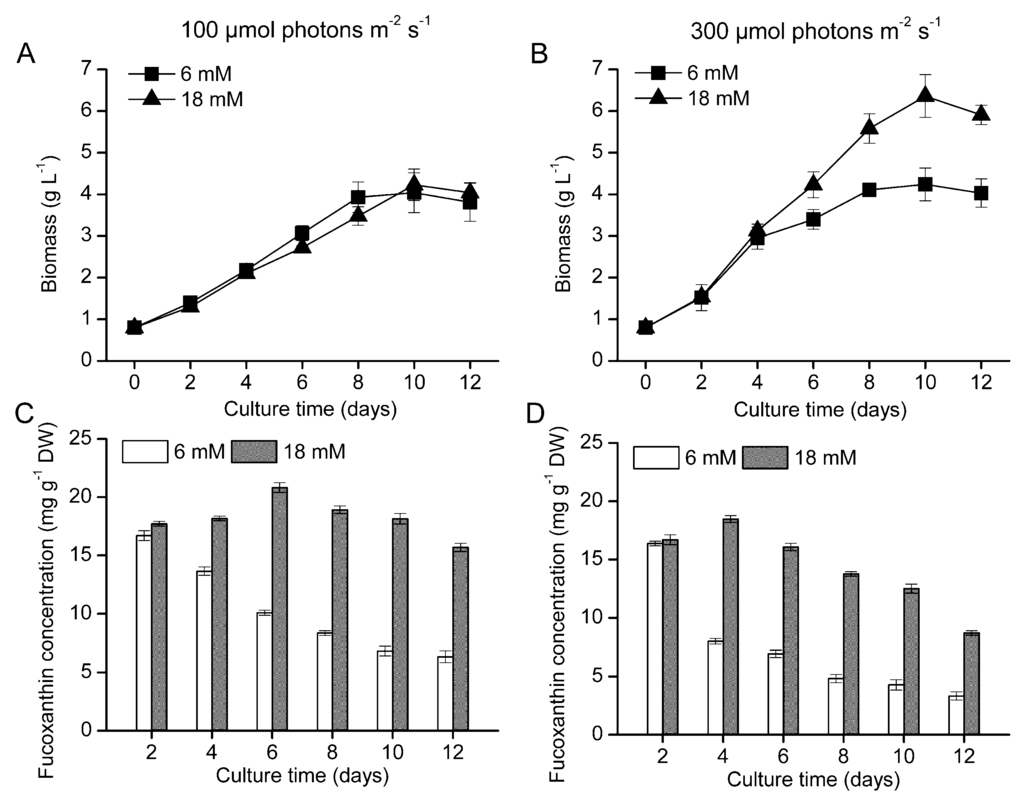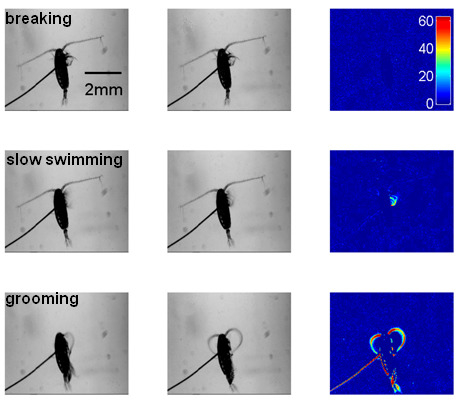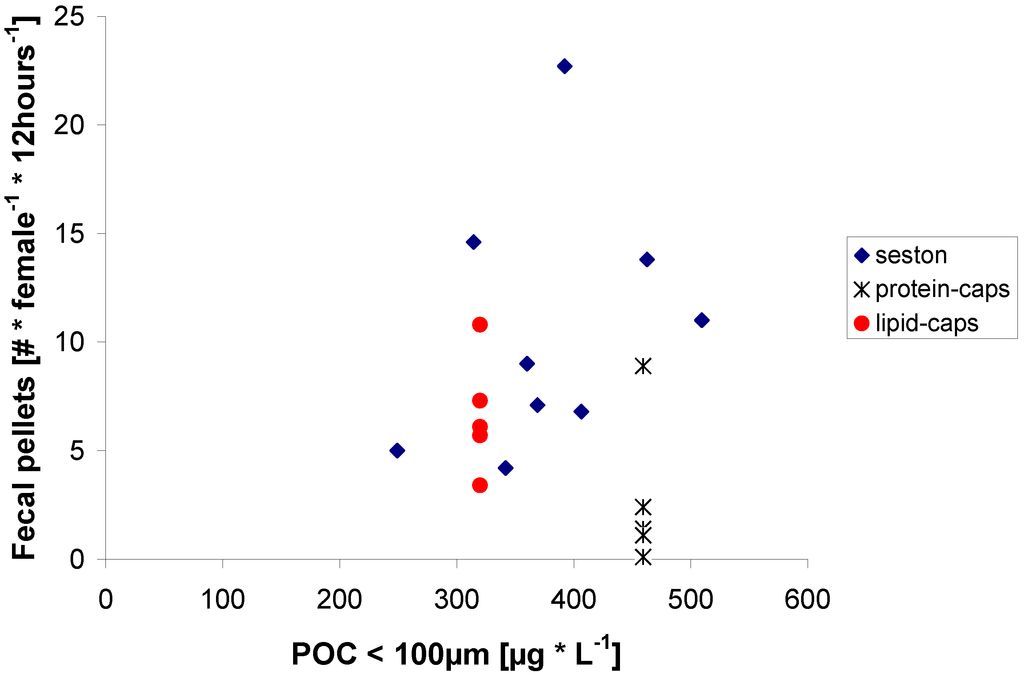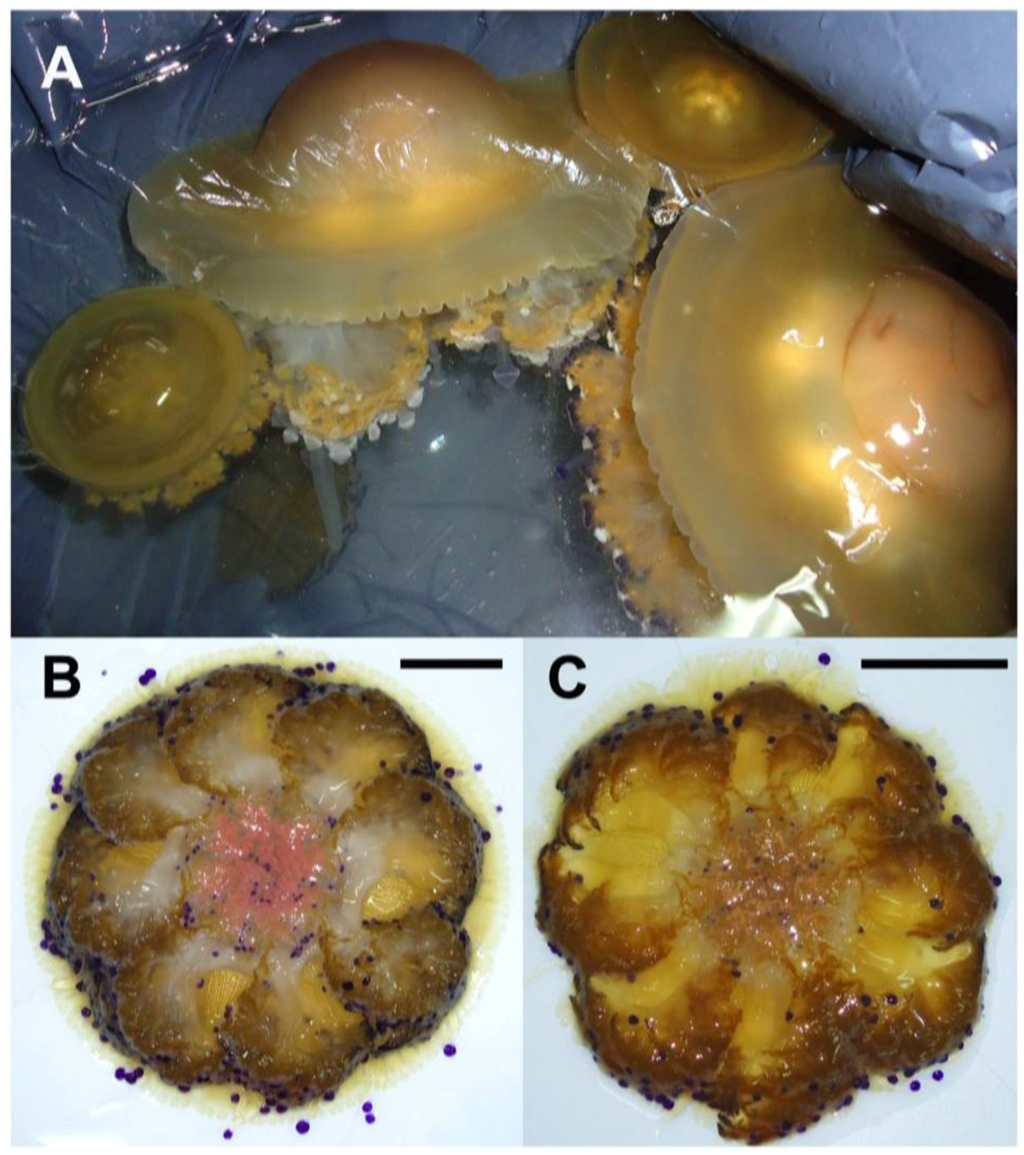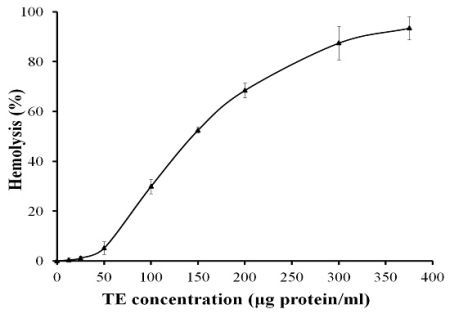Bioactive Compounds from Marine Plankton
A topical collection in Marine Drugs (ISSN 1660-3397).
Viewed by 276713
Share This Topical Collection
Editor
 Prof. Dr. Georg Pohnert
Prof. Dr. Georg Pohnert
 Prof. Dr. Georg Pohnert
Prof. Dr. Georg Pohnert
E-Mail
Website
Collection Editor
Institute for Inorganic and Analytical Chemistry, Friedrich-Schiller-University Jena, Lessingstr. 8, D-07743 Jena, Germany
Interests: marine chemical ecology; analytical chemistry; biosynthesis; oxylipins; lipids; terpenoids; phytoplankton
Topical Collection Information
Dear Collegues,
The inhabitants of the open water are under the influence of gradual changes in nutrients, light, temperature, mechanical cues. But only chemical signals have the potential to provide important directional information about conspecific, predatory or competing species. Hence, a very interesting chemistry has developed that has the power to shape the ecosystem. But these interesting metabolic tasks also resulted in the evolution of metabolites with interesting pharmacological activity. Bioactive metabolites include for example dissolved gases, lipids, oxylipins, polyketides, peptides, and proteins that demonstrate a surprising structural and functional complexity. In this collection we want to explore all topics in natural product chemistry of marine plankton and to illustrate current methodological and conceptual challenges in plankton research. Especially the complex interplay of toxins, nutrients and infochemicals shaping the marine plankton is of interest, but also the pharmacological activity, biosynthesis and genetics of the multitude of interesting metabolites will be covered in this collection.
Recent progress reveals an emerging field that calls for special attention and I therefore invite you to contribute your exciting work to the collection on “Marine Plankton” of Marine Drugs.
Prof. Dr. Georg Pohnert
Collection Editor
Manuscript Submission Information
Manuscripts should be submitted online at www.mdpi.com by registering and logging in to this website. Once you are registered, click here to go to the submission form. Manuscripts can be submitted until the deadline. All submissions that pass pre-check are peer-reviewed. Accepted papers will be published continuously in the journal (as soon as accepted) and will be listed together on the collection website. Research articles, review articles as well as short communications are invited. For planned papers, a title and short abstract (about 100 words) can be sent to the Editorial Office for announcement on this website.
Submitted manuscripts should not have been published previously, nor be under consideration for publication elsewhere (except conference proceedings papers). All manuscripts are thoroughly refereed through a single-blind peer-review process. A guide for authors and other relevant information for submission of manuscripts is available on the Instructions for Authors page. Marine Drugs is an international peer-reviewed open access monthly journal published by MDPI.
Please visit the Instructions for Authors page before submitting a manuscript.
The Article Processing Charge (APC) for publication in this open access journal is 2900 CHF (Swiss Francs).
Submitted papers should be well formatted and use good English. Authors may use MDPI's
English editing service prior to publication or during author revisions.
Keywords
- marine plankton
- phytoplankton
- zooplankton
- microbial loop
- bioactive natural products
- chemical ecology
- chemical interactions
- metabolites
- lipids
- oxylipins
- red tides
- polyketides
- toxins
Published Papers (30 papers)
Open AccessArticle
Screening of Lipid-Reducing Activity and Cytotoxicity of the Exometabolome from Cyanobacteria
by
Rúben Luz, Rita Cordeiro, Vítor Gonçalves, Vitor Vasconcelos and Ralph Urbatzka
Viewed by 1092
Abstract
Cyanobacteria are rich producers of secondary metabolites, excreting some of these to the culture media. However, the exometabolome of cyanobacteria has been poorly studied, and few studies have dwelled on its characterization and bioactivity assessment. In this work, exometabolomes of 56 cyanobacterial strains
[...] Read more.
Cyanobacteria are rich producers of secondary metabolites, excreting some of these to the culture media. However, the exometabolome of cyanobacteria has been poorly studied, and few studies have dwelled on its characterization and bioactivity assessment. In this work, exometabolomes of 56 cyanobacterial strains were characterized by HR-ESI-LC-MS/MS. Cytotoxicity was assessed on two carcinoma cell lines, HepG2 and HCT116, while the reduction in lipids was tested in zebrafish larvae and in a steatosis model with fatty acid-overloaded human liver cells. The exometabolome analysis using GNPS revealed many complex clusters of unique compounds in several strains, with no identifications in public databases. Three strains reduced viability in HCT116 cells, namely Tolypotrichaceae BACA0428 (30.45%), Aphanizomenonaceae BACA0025 (40.84%), and Microchaetaceae BACA0110 (46.61%). Lipid reduction in zebrafish larvae was only observed by exposure to
Dulcicalothrix sp. BACA0344 (60%). The feature-based molecular network shows that this bioactivity was highly correlated with two flavanones, a compound class described in the literature to have lipid reduction activity. The exometabolome characterization of cyanobacteria strains revealed a high chemodiversity, which supports it as a source for novel bioactive compounds, despite most of the time being overlooked.
Full article
►▼
Show Figures
Open AccessArticle
Orchestrated Response of Intracellular Zwitterionic Metabolites in Stress Adaptation of the Halophilic Heterotrophic Bacterium Pelagibaca bermudensis
by
Muhaiminatul Azizah and Georg Pohnert
Cited by 4 | Viewed by 2372
Abstract
Osmolytes are naturally occurring organic compounds that protect cells against various forms of stress. Highly polar, zwitterionic osmolytes are often used by marine algae and bacteria to counteract salinity or temperature stress. We investigated the effect of several stress conditions including different salinities,
[...] Read more.
Osmolytes are naturally occurring organic compounds that protect cells against various forms of stress. Highly polar, zwitterionic osmolytes are often used by marine algae and bacteria to counteract salinity or temperature stress. We investigated the effect of several stress conditions including different salinities, temperatures, and exposure to organic metabolites released by the alga
Tetraselmis striata on the halophilic heterotrophic bacterium
Pelagibaca bermudensis. Using ultra-high-performance liquid chromatography (UHPLC) on a ZIC-HILIC column and high-resolution electrospray ionization mass spectrometry, we simultaneously detected and quantified the eleven highly polar compounds dimethylsulfoxonium propionate (DMSOP), dimethylsulfoniopropionate (DMSP), gonyol, cysteinolic acid, ectoine, glycine betaine (GBT), carnitine, sarcosine, choline, proline, and 4-hydroxyproline. All compounds are newly described in
P. bermudensis and potentially involved in physiological functions essential for bacterial survival under variable environmental conditions. We report that adaptation to various forms of stress is accomplished by adjusting the pattern and amount of the zwitterionic metabolites.
Full article
►▼
Show Figures
Open AccessReview
Development of the “Applied Proteomics” Concept for Biotechnology Applications in Microalgae: Example of the Proteome Data in Nannochloropsis gaditana
by
Rafael Carrasco-Reinado, María Bermudez-Sauco, Almudena Escobar-Niño, Jesús M. Cantoral and Francisco Javier Fernández-Acero
Cited by 4 | Viewed by 2807
Abstract
Most of the marine ecosystems on our planet are still unknown. Among these ecosystems, microalgae act as a baseline due to their role as primary producers. The estimated millions of species of these microorganisms represent an almost infinite source of potentially active biocomponents
[...] Read more.
Most of the marine ecosystems on our planet are still unknown. Among these ecosystems, microalgae act as a baseline due to their role as primary producers. The estimated millions of species of these microorganisms represent an almost infinite source of potentially active biocomponents offering unlimited biotechnology applications. This review considers current research in microalgae using the “omics” approach, which today is probably the most important biotechnology tool. These techniques enable us to obtain a large volume of data from a single experiment. The specific focus of this review is proteomics as a technique capable of generating a large volume of interesting information in a single proteomics assay, and particularly the concept of applied proteomics. As an example, this concept has been applied to the study of
Nannochloropsis gaditana, in which proteomics data generated are transformed into information of high commercial value by identifying proteins with direct applications in the biomedical and agri-food fields, such as the protein designated UCA01 which presents antitumor activity, obtained from
N. gaditana.
Full article
►▼
Show Figures
Open AccessReview
Biosynthesis of Saxitoxin in Marine Dinoflagellates: An Omics Perspective
by
Muhamad Afiq Akbar, Nurul Yuziana Mohd Yusof, Noor Idayu Tahir, Asmat Ahmad, Gires Usup, Fathul Karim Sahrani and Hamidun Bunawan
Cited by 37 | Viewed by 7219
Abstract
Saxitoxin is an alkaloid neurotoxin originally isolated from the clam
Saxidomus giganteus in 1957. This group of neurotoxins is produced by several species of freshwater cyanobacteria and marine dinoflagellates. The saxitoxin biosynthesis pathway was described for the first time in the 1980s and,
[...] Read more.
Saxitoxin is an alkaloid neurotoxin originally isolated from the clam
Saxidomus giganteus in 1957. This group of neurotoxins is produced by several species of freshwater cyanobacteria and marine dinoflagellates. The saxitoxin biosynthesis pathway was described for the first time in the 1980s and, since then, it was studied in more than seven cyanobacterial genera, comprising 26 genes that form a cluster ranging from 25.7 kb to 35 kb in sequence length. Due to the complexity of the genomic landscape, saxitoxin biosynthesis in dinoflagellates remains unknown. In order to reveal and understand the dynamics of the activity in such impressive unicellular organisms with a complex genome, a strategy that can carefully engage them in a systems view is necessary. Advances in omics technology (the collective tools of biological sciences) facilitated high-throughput studies of the genome, transcriptome, proteome, and metabolome of dinoflagellates. The omics approach was utilized to address saxitoxin-producing dinoflagellates in response to environmental stresses to improve understanding of dinoflagellates gene–environment interactions. Therefore, in this review, the progress in understanding dinoflagellate saxitoxin biosynthesis using an omics approach is emphasized. Further potential applications of metabolomics and genomics to unravel novel insights into saxitoxin biosynthesis in dinoflagellates are also reviewed.
Full article
►▼
Show Figures
Open AccessArticle
Biological Effects of the Azaspiracid-Producing Dinoflagellate Azadinium dexteroporum in Mytilus galloprovincialis from the Mediterranean Sea
by
Maria Elisa Giuliani, Stefano Accoroni, Marica Mezzelani, Francesca Lugarini, Simone Bacchiocchi, Melania Siracusa, Tamara Tavoloni, Arianna Piersanti, Cecilia Totti, Francesco Regoli, Rachele Rossi, Adriana Zingone and Stefania Gorbi
Cited by 15 | Viewed by 3412
Abstract
Azaspiracids (AZAs) are marine biotoxins including a variety of analogues. Recently, novel AZAs produced by the Mediterranean dinoflagellate
Azadinium dexteroporum were discovered (AZA-54, AZA-55, 3-epi-AZA-7, AZA-56, AZA-57 and AZA-58) and their biological effects have not been investigated yet. This study aimed to identify
[...] Read more.
Azaspiracids (AZAs) are marine biotoxins including a variety of analogues. Recently, novel AZAs produced by the Mediterranean dinoflagellate
Azadinium dexteroporum were discovered (AZA-54, AZA-55, 3-epi-AZA-7, AZA-56, AZA-57 and AZA-58) and their biological effects have not been investigated yet. This study aimed to identify the biological responses (biomarkers) induced in mussels
Mytilus galloprovincialis after the bioaccumulation of AZAs from
A. dexteroporum. Organisms were fed with
A. dexteroporum for 21 days and subsequently subjected to a recovery period (normal diet) of 21 days. Exposed organisms accumulated AZA-54, 3-epi-AZA-7 and AZA-55, predominantly in the digestive gland. Mussels’ haemocytes showed inhibition of phagocytosis activity, modulation of the composition of haemocytic subpopulation and damage to lysosomal membranes; the digestive tissue displayed thinned tubule walls, consumption of storage lipids and accumulation of lipofuscin. Slight genotoxic damage was also observed. No clear occurrence of oxidative stress and alteration of nervous activity was detected in AZA-accumulating mussels. Most of the altered parameters returned to control levels after the recovery phase. The toxic effects detected in
M. galloprovincialis demonstrate a clear biological impact of the AZAs produced by
A. dexteroporum, and could be used as early indicators of contamination associated with the ingestion of seafood.
Full article
►▼
Show Figures
Open AccessReview
Polyamines in Microalgae: Something Borrowed, Something New
by
Hung-Yun Lin and Han-Jia Lin
Cited by 37 | Viewed by 6665
Abstract
Microalgae of different evolutionary origins are typically found in rivers, lakes, and oceans, providing more than 45% of global primary production. They provide not only a food source for animals, but also affect microbial ecosystems through symbioses with microorganisms or secretion of some
[...] Read more.
Microalgae of different evolutionary origins are typically found in rivers, lakes, and oceans, providing more than 45% of global primary production. They provide not only a food source for animals, but also affect microbial ecosystems through symbioses with microorganisms or secretion of some metabolites. Derived from amino acids, polyamines are present in almost all types of organisms, where they play important roles in maintaining physiological functions or against stress. Microalgae can produce a variety of distinct polyamines, and the polyamine content is important to meet the physiological needs of microalgae and may also affect other species in the environment. In addition, some polyamines produced by microalgae have medical or nanotechnological applications. Previous studies on several types of microalgae have indicated that the putative polyamine metabolic pathways may be as complicated as the genomes of these organisms, which contain genes originating from plants, animals, and even bacteria. There are also several novel polyamine synthetic routes in microalgae. Understanding the nature of polyamines in microalgae will not only improve our knowledge of microalgal physiology and ecological function, but also provide valuable information for biotechnological applications.
Full article
►▼
Show Figures
Open AccessArticle
Sargassum Fusiforme Polysaccharide SFP-F2 Activates the NF-κB Signaling Pathway via CD14/IKK and P38 Axes in RAW264.7 Cells
by
Liujun Chen, Peichao Chen, Jian Liu, Chenxi Hu, Shanshan Yang, Dan He, Ping Yu, Mingjiang Wu and Xu Zhang
Cited by 32 | Viewed by 5466
Abstract
Sargassum fusifrome is considered a “longevity vegetable” in Asia.
Sargassum fusifrome polysaccharides exhibit numerous biological activities, specially, the modulation of immune response via the NF-κB signaling pathway. However, the precise mechanisms by which these polysaccharides modulate the immune response through the NF-κB signaling
[...] Read more.
Sargassum fusifrome is considered a “longevity vegetable” in Asia.
Sargassum fusifrome polysaccharides exhibit numerous biological activities, specially, the modulation of immune response via the NF-κB signaling pathway. However, the precise mechanisms by which these polysaccharides modulate the immune response through the NF-κB signaling pathway have not been elucidated. In this study, we purified and characterized a novel fraction of
Sargassum fusifrome polysaccharide and named it SFP-F2. SFP-F2 significantly upregulated the production of the cytokines TNF-α, IL-1β and IL-6 in RAW264.7 cells. It also activated the NF-κB signaling pathway. Data obtained from experiments carried out with specific inhibitors (PDTC, BAY 11-7082, IKK16 and SB203580) suggested that SFP-F2 activated the NF-κB signaling pathway via CD14/IKK and P38 axes. SFP-F2 could therefore potentially exert an immune-enhancement effect through inducing the CD14/IKK/NF-κB and P38/NF-κB signaling pathways.
Full article
►▼
Show Figures
Open AccessArticle
Metabolite Profiling of the Microalgal Diatom Chaetoceros Calcitrans and Correlation with Antioxidant and Nitric Oxide Inhibitory Activities via 1H NMR-Based Metabolomics
by
Awanis Azizan, Muhammad Safwan Ahamad Bustamam, M. Maulidiani, Khozirah Shaari, Intan Safinar Ismail, Norio Nagao and Faridah Abas
Cited by 50 | Viewed by 8652
Abstract
Microalgae are promising candidate resources from marine ecology for health-improving effects. Metabolite profiling of the microalgal diatom,
Chaetoceros calcitrans was conducted by using robust metabolomics tools, namely
1H nuclear magnetic resonance (NMR) spectroscopy coupled with multivariate data analysis (MVDA). The unsupervised data
[...] Read more.
Microalgae are promising candidate resources from marine ecology for health-improving effects. Metabolite profiling of the microalgal diatom,
Chaetoceros calcitrans was conducted by using robust metabolomics tools, namely
1H nuclear magnetic resonance (NMR) spectroscopy coupled with multivariate data analysis (MVDA). The unsupervised data analysis, using principal component analysis (PCA), resolved the five types of extracts made by solvents ranging from polar to non-polar into five different clusters. Collectively, with various extraction solvents, 11 amino acids, cholesterol, 6 fatty acids, 2 sugars, 1 osmolyte, 6 carotenoids and 2 chlorophyll pigments were identified. The fatty acids and both carotenoid pigments as well as chlorophyll, were observed in the extracts made from medium polar (acetone, chloroform) and non-polar (hexane) solvents. It is suggested that the compounds were the characteristic markers that influenced the separation between the clusters. Based on partial least square (PLS) analysis, fucoxanthin, astaxanthin, violaxanthin, zeaxanthin, canthaxanthin, and lutein displayed strong correlation to 2,2-diphenyl-1-picrylhydrazyl (DPPH) free radical scavenging and nitric oxide (NO) inhibitory activity. This metabolomics study showed that solvent extractions are one of the main bottlenecks for the maximum recovery of bioactive microalgal compounds and could be a better source of natural antioxidants due to a high value of metabolites.
Full article
►▼
Show Figures
Open AccessArticle
LC-MS/MS Detection of Karlotoxins Reveals New Variants in Strains of the Marine Dinoflagellate Karlodinium veneficum from the Ebro Delta (NW Mediterranean)
by
Bernd Krock, Julia A. Busch, Urban Tillmann, Francisco García-Camacho, Asterio Sánchez-Mirón, Juan J. Gallardo-Rodríguez, Lorenzo López-Rosales, Karl B. Andree, Margarita Fernández-Tejedor, Matthias Witt, Allan D. Cembella and Allen R. Place
Cited by 21 | Viewed by 7142
Abstract
A liquid chromatography-tandem mass spectrometry (LC-MS/MS) method was developed for the detection and quantitation of karlotoxins in the selected reaction monitoring (SRM) mode. This novel method was based upon the analysis of purified karlotoxins (KcTx-1, KmTx-2, 44-oxo-KmTx-2, KmTx-5), one amphidinol (AM-18), and unpurified
[...] Read more.
A liquid chromatography-tandem mass spectrometry (LC-MS/MS) method was developed for the detection and quantitation of karlotoxins in the selected reaction monitoring (SRM) mode. This novel method was based upon the analysis of purified karlotoxins (KcTx-1, KmTx-2, 44-oxo-KmTx-2, KmTx-5), one amphidinol (AM-18), and unpurified extracts of bulk cultures of the marine dinoflagellate
Karlodinium veneficum strain CCMP2936 from Delaware (Eastern USA), which produces KmTx-1 and KmTx-3. The limit of detection of the SRM method for KmTx-2 was determined as 2.5 ng on-column. Collision induced dissociation (CID) spectra of all putative karlotoxins were recorded to present fragmentation patterns of each compound for their unambiguous identification. Bulk cultures of
K. veneficum strain K10 isolated from an embayment of the Ebro Delta, NW Mediterranean, yielded five previously unreported putative karlotoxins with molecular masses 1280, 1298, 1332, 1356, and 1400 Da, and similar fragments to KmTx-5. Analysis of several isolates of
K. veneficum from the Ebro Delta revealed small-scale diversity in the karlotoxin spectrum in that one isolate from Fangar Bay produced KmTx-5, whereas the five putative novel karlotoxins were found among several isolates from nearby, but hydrographically distinct Alfacs Bay. Application of this LC-MS/MS method represents an incremental advance in the determination of putative karlotoxins, particularly in the absence of a complete spectrum of purified analytical standards of known specific potency.
Full article
►▼
Show Figures
Open AccessArticle
Physiological and Biochemical Changes Reveal Differential Patterns of Docosahexaenoic Acid Partitioning in Two Marine Algal Strains of Isochrysis
by
Zheng Sun, Yong Chen, Xuemei Mao and Jin Liu
Cited by 6 | Viewed by 4204
Abstract
The marine microalgae
Isochrysis are a good producer of natural docosahexaenoic acid (DHA). To better understand the patterns of DHA accumulation and distribution, two
Isochrysis strains, CL153180 and CCMP462, were evaluated in this study. In a batch culture, CL153180 showed a decline in
[...] Read more.
The marine microalgae
Isochrysis are a good producer of natural docosahexaenoic acid (DHA). To better understand the patterns of DHA accumulation and distribution, two
Isochrysis strains, CL153180 and CCMP462, were evaluated in this study. In a batch culture, CL153180 showed a decline in DHA content while CCMP462 exhibited a progressive increase during the late growth period when nitrogen was almost exhausted. In response to nitrogen deficiency (ND), both strains showed a considerable increase in neutral lipids (NL) at the expense of glycolipids (GL) but had little variation in phospholipids (PL). In CL153180, the DHA percentage of NL decreased gradually upon ND, while that in CCMP462 increased progressively to 21.4% after 4 days of ND, which is around 5-fold higher than CL153180. Accordingly, in contrast to CL153180 that stored DHA predominantly in GL, CCMP462 accumulated DHA mainly in NL in late days of ND. Taken together, we proposed a working model for the differential DHA partitioning patterns between two
Isochrysis strains: for CCMP462, the degradation of GL released free fatty acids including DHA, which was incorporated into NL upon ND; whereas for CL153180, the released DHA from GL might not be incorporated into NL, and, consequently, might be subject to β-oxidation for degradation.
Full article
►▼
Show Figures
Open AccessArticle
Proteomic Analysis of the Chlorophyta Dunaliella New Strain AL-1 Revealed Global Changes of Metabolism during High Carotenoid Production
by
Faten Ben Amor, Fatma Elleuch, Hajer Ben Hlima, Matthieu Garnier, Bruno Saint-Jean, Mohamed Barkallah, Chantal Pichon, Slim Abdelkafi and Imen Fendri
Cited by 24 | Viewed by 5379
Abstract
The green microalgae
Dunaliella genus is known for the production of high added value molecules. In this study, strain AL-1 was isolated from the Sebkha of Sidi El Hani (Sousse, Tunisia). This isolate was identified both morphologically and genetically via 18S rRNA gene
[...] Read more.
The green microalgae
Dunaliella genus is known for the production of high added value molecules. In this study, strain AL-1 was isolated from the Sebkha of Sidi El Hani (Sousse, Tunisia). This isolate was identified both morphologically and genetically via 18S rRNA gene sequence as a member of the genus
Dunaliella. Strain AL-1 was found to be closely related to
Dunaliella salina,
Dunaliella quartolecta and
Dunaliella polymorpha with more than 97% similarity. Response surface methodology was used to maximize carotenoid production by strain AL-1 by optimizing its growth conditions. The highest carotenoid content was obtained at salinity: 51, light intensity: 189.89 μmol photons·m
−2·s
−1, and nitrogen: 60 mg·L
−1. Proteomic profiling, using two-dimensional gel electrophoresis, was performed from standard and optimized cultures. We detected 127 protein spots which were significantly differentially expressed between standard and optimized cultures. Among them 16 protein spots were identified with mass spectrometry and grouped into different functional categories using KEGG (Kyoto Encyclopedia of Genes and Genomes) such as photosynthetic Calvin cycle, regulation/defense, energy metabolism, glycolysis, and cellular processes. The current study could be of great interest in providing information on the effect of stressful conditions in microalgae carotenoid production.
Full article
►▼
Show Figures
Open AccessArticle
Rapid Estimation of Astaxanthin and the Carotenoid-to-Chlorophyll Ratio in the Green Microalga Chromochloris zofingiensis Using Flow Cytometry
by
Junhui Chen, Dong Wei and Georg Pohnert
Cited by 48 | Viewed by 9290
Abstract
The green microalga
Chromochloris zofingiensis can accumulate significant amounts of valuable carotenoids, mainly natural astaxanthin, a product with applications in functional food, cosmetics, nutraceuticals, and with potential therapeutic value in cardiovascular and neurological diseases. To optimize the production of astaxanthin, it is essential
[...] Read more.
The green microalga
Chromochloris zofingiensis can accumulate significant amounts of valuable carotenoids, mainly natural astaxanthin, a product with applications in functional food, cosmetics, nutraceuticals, and with potential therapeutic value in cardiovascular and neurological diseases. To optimize the production of astaxanthin, it is essential to monitor the content of astaxanthin in algal cells during cultivation. The widely used HPLC (high-performance liquid chromatography) method for quantitative astaxanthin determination is time-consuming and laborious. In the present work, we present a method using flow cytometry (FCM) for in vivo determination of the astaxanthin content and the carotenoid-to-chlorophyll ratio (Car/Chl) in mixotrophic
C. zofingiensis. The method is based on the assessment of fluorescent characteristics of cellular pigments. The mean fluorescence intensity (MFI) of living cells was determined by FCM to monitor pigment formation based on the correlation between MFI detected in particular channels (FL1: 533 ± 15 nm; FL2: 585 ± 20 nm; FL3: >670 nm) and pigment content in algal cells. Through correlation and regression analysis, a linear relationship was observed between MFI in FL2 (band-pass filter, emission at 585 nm in FCM) and astaxanthin content (in HPLC) and applied for predicting astaxanthin content. With similar procedures, the relationships between MFI in different channels and Car/Chl ratio in mixotrophic
C. zofingiensis were also determined. Car/Chl ratios could be estimated by the ratios of MFI (FL1/FL3, FL2/FL3). FCM is thus a highly efficient and feasible method for rapid estimation of astaxanthin content in the green microalga
C. zofingiensis. The rapid FCM method is complementary to the current HPLC method, especially for rapid evaluation and prediction of astaxanthin formation as it is required during the high-throughput culture in the laboratory and mass cultivation in industry.
Full article
►▼
Show Figures
Open AccessArticle
Two Isomeric C16 Oxo-Fatty Acids from the Diatom Chaetoceros karianus Show Dual Agonist Activity towards Human Peroxisome Proliferator-Activated Receptors (PPARs) α/γ
by
Angel Moldes-Anaya, Thomas Sæther, Silvio Uhlig, Hilde I. Nebb, Terje Larsen, Hans C. Eilertsen and Steinar M. Paulsen
Cited by 11 | Viewed by 6196
Abstract
The peroxisome proliferator-activated receptors (PPARs) function as ligand-activated transcription factors that convert signals in the form of lipids to physiological responses through the activation of metabolic target genes. Due to their key roles in lipid and carbohydrate metabolism, the PPARs are important drug
[...] Read more.
The peroxisome proliferator-activated receptors (PPARs) function as ligand-activated transcription factors that convert signals in the form of lipids to physiological responses through the activation of metabolic target genes. Due to their key roles in lipid and carbohydrate metabolism, the PPARs are important drug targets. However, for several of the PPAR drugs currently in use, adverse side effects have been reported. In an effort to identify compounds from marine organisms that may serve as molecular scaffolds for the development of novel and safer PPAR-targeting drugs, we performed a bioassay-guided screening of organic extracts made from organisms supplied by the Norwegian Biobank of Arctic Marine Organisms (Marbank). Among several interesting hits, we identified two poorly described isomeric oxo-fatty acids from the microalgae
Chaetoceros karianus for which we provide the first evidence that they might display dual specificity towards human PPARα and PPARγ. Principal component analysis showed that
C. karianus stood out from other
Chaetoceros species, both with respect to the metabolic profile and the PPAR activity. The isolation of these compounds holds the potential of uncovering a PPAR pharmacophore with tunable activity and specificity.
Full article
►▼
Show Figures
Open AccessArticle
Chytridiomycosis of Marine Diatoms—The Role of Stress Physiology and Resistance in Parasite-Host Recognition and Accumulation of Defense Molecules
by
Bettina Scholz, Frithjof C. Küpper, Wim Vyverman, Halldór G. Ólafsson and Ulf Karsten
Cited by 27 | Viewed by 7694
Abstract
Little is known about the role of chemotaxis in the location and attachment of chytrid zoospores to potential diatom hosts. Hypothesizing that environmental stress parameters affect parasite-host recognition, four chytrid-diatom tandem cultures (
Chytridium sp./
Navicula sp.,
Rhizophydium type I/
Nitzschia sp.,
Rhizophydium
[...] Read more.
Little is known about the role of chemotaxis in the location and attachment of chytrid zoospores to potential diatom hosts. Hypothesizing that environmental stress parameters affect parasite-host recognition, four chytrid-diatom tandem cultures (
Chytridium sp./
Navicula sp.,
Rhizophydium type I/
Nitzschia sp.,
Rhizophydium type IIa/
Rhizosolenia sp.,
Rhizophydium type IIb/
Chaetoceros sp.) were used to test the chemotaxis of chytrid zoospores and the presence of potential defense molecules in a non-contact-co-culturing approach. As potential triggers in the chemotaxis experiments, standards of eight carbohydrates, six amino acids, five fatty acids, and three compounds known as compatible solutes were used in individual and mixed solutions, respectively. In all tested cases, the whole-cell extracts of the light-stressed (continuous light exposure combined with 6 h UV radiation) hosts attracted the highest numbers of zoospores (86%), followed by the combined carbohydrate standard solution (76%), while all other compounds acted as weak triggers only. The results of the phytochemical screening, using biomass and supernatant extracts of susceptible and resistant host-diatom cultures, indicated in most of the tested extracts the presence of polyunsaturated fatty acids, phenols, and aldehydes, whereas the bioactivity screenings showed that the zoospores of the chytrid parasites were only significantly affected by the ethanolic supernatant extract of the resistant hosts.
Full article
►▼
Show Figures
Open AccessReview
Algal Cell Factories: Approaches, Applications, and Potentials
by
Weiqi Fu, Amphun Chaiboonchoe, Basel Khraiwesh, David R. Nelson, Dina Al-Khairy, Alexandra Mystikou, Amnah Alzahmi and Kourosh Salehi-Ashtiani
Cited by 75 | Viewed by 11532
Abstract
With the advent of modern biotechnology, microorganisms from diverse lineages have been used to produce bio-based feedstocks and bioactive compounds. Many of these compounds are currently commodities of interest, in a variety of markets and their utility warrants investigation into improving their production
[...] Read more.
With the advent of modern biotechnology, microorganisms from diverse lineages have been used to produce bio-based feedstocks and bioactive compounds. Many of these compounds are currently commodities of interest, in a variety of markets and their utility warrants investigation into improving their production through strain development. In this review, we address the issue of strain improvement in a group of organisms with strong potential to be productive “cell factories”: the photosynthetic microalgae. Microalgae are a diverse group of phytoplankton, involving polyphyletic lineage such as green algae and diatoms that are commonly used in the industry. The photosynthetic microalgae have been under intense investigation recently for their ability to produce commercial compounds using only light, CO
2, and basic nutrients. However, their strain improvement is still a relatively recent area of work that is under development. Importantly, it is only through appropriate engineering methods that we may see the full biotechnological potential of microalgae come to fruition. Thus, in this review, we address past and present endeavors towards the aim of creating productive algal cell factories and describe possible advantageous future directions for the field.
Full article
►▼
Show Figures
Open AccessArticle
Chemical and Genetic Diversity of Nodularia spumigena from the Baltic Sea
by
Hanna Mazur-Marzec, Mireia Bertos-Fortis, Anna Toruńska-Sitarz, Anna Fidor and Catherine Legrand
Cited by 29 | Viewed by 8048
Abstract
Nodularia spumigena is a toxic, filamentous cyanobacterium occurring in brackish waters worldwide, yet forms extensive recurrent blooms in the Baltic Sea.
N. spumigena produces several classes of non-ribosomal peptides (NRPs) that are active against several key metabolic enzymes. Previously, strains from geographically distant
[...] Read more.
Nodularia spumigena is a toxic, filamentous cyanobacterium occurring in brackish waters worldwide, yet forms extensive recurrent blooms in the Baltic Sea.
N. spumigena produces several classes of non-ribosomal peptides (NRPs) that are active against several key metabolic enzymes. Previously, strains from geographically distant regions showed distinct NRP metabolic profiles. In this work, conspecific diversity in
N. spumigena was studied using chemical and genetic approaches. NRP profiles were determined in 25
N. spumigena strains isolated in different years and from different locations in the Baltic Sea using liquid chromatography-tandem mass spectrometry (LC-MS/MS). Genetic diversity was assessed by targeting the phycocyanin intergenic spacer and flanking regions (
cpcBA-IGS). Overall, 14 spumigins, 5 aeruginosins, 2 pseudaeruginosins, 2 nodularins, 36 anabaenopeptins, and one new cyanopeptolin-like peptide were identified among the strains. Seven anabaenopeptins were new structures; one cyanopeptolin-like peptide was discovered in
N. spumigena for the first time. Based on NRP profiles and
cpcBA-IGS sequences, the strains were grouped into two main clusters without apparent influence of year and location, indicating persistent presence of these two subpopulations in the Baltic Sea. This study is a major step in using chemical profiling to explore conspecific diversity with a higher resolution than with a sole genetic approach.
Full article
►▼
Show Figures
Open AccessArticle
Structure–Activity Relationship Studies Using Natural and Synthetic Okadaic Acid/Dinophysistoxin Toxins
by
Michael J. Twiner, Gregory J. Doucette, Yucheng Pang, Chao Fang, Craig J. Forsyth and Christopher O. Miles
Cited by 27 | Viewed by 7103
Abstract
Okadaic acid (OA) and the closely related dinophysistoxins (DTXs) are algal toxins that accumulate in shellfish and are known serine/threonine protein phosphatase (ser/thr PP) inhibitors. Phosphatases are important modulators of enzyme activity and cell signaling pathways. However, the interactions between the OA/DTX toxins
[...] Read more.
Okadaic acid (OA) and the closely related dinophysistoxins (DTXs) are algal toxins that accumulate in shellfish and are known serine/threonine protein phosphatase (ser/thr PP) inhibitors. Phosphatases are important modulators of enzyme activity and cell signaling pathways. However, the interactions between the OA/DTX toxins and phosphatases are not fully understood. This study sought to identify phosphatase targets and characterize their structure–activity relationships (SAR) with these algal toxins using a combination of phosphatase activity and cytotoxicity assays. Preliminary screening of 21 human and yeast phosphatases indicated that only three ser/thr PPs (PP2a, PP1, PP5) were inhibited by physiologically saturating concentrations of DTX2 (200 nM). SAR studies employed naturally-isolated OA, DTX1, and DTX2, which vary in degree and/or position of methylation, in addition to synthetic 2-
epi-DTX2. OA/DTX analogs induced cytotoxicity and inhibited PP activity with a relatively conserved order of potency: OA = DTX1 ≥ DTX2 >> 2-
epi-DTX. The PPs were also differentially inhibited with sensitivities of PP2a > PP5 > PP1. These findings demonstrate that small variations in OA/DTX toxin structures, particularly at the head region (i.e., C1/C2), result in significant changes in toxicological potency, whereas changes in methylation at C31 and C35 (tail region) only mildly affect potency. In addition to this being the first study to extensively test OA/DTX analogs’ activities towards PP5, these data will be helpful for accurately determining toxic equivalence factors (TEFs), facilitating molecular modeling efforts, and developing highly selective phosphatase inhibitors.
Full article
►▼
Show Figures
Open AccessReview
Extracellular Metabolites from Industrial Microalgae and Their Biotechnological Potential
by
Lu Liu, Georg Pohnert and Dong Wei
Cited by 149 | Viewed by 12294
Abstract
Industrial microalgae, as a big family of promising producers of renewable biomass feedstock, have been commercially exploited for functional food, living feed and feed additives, high-value chemicals in nutraceuticals, cosmeceuticals, and chemical reagents. Recently, microalgae have also been considered as a group that
[...] Read more.
Industrial microalgae, as a big family of promising producers of renewable biomass feedstock, have been commercially exploited for functional food, living feed and feed additives, high-value chemicals in nutraceuticals, cosmeceuticals, and chemical reagents. Recently, microalgae have also been considered as a group that might play an important role in biofuel development and environmental protection. Almost all current products of industrial microalgae are derived from their biomass; however, large amounts of spent cell-free media are available from mass cultivation that is mostly unexploited. In this contribution we discuss that these media, which may contain a remarkable diversity of bioactive substances are worthy to be recovered for further use. Obviously, the extracellular metabolites from industrial microalgae have long been neglected in the development of production methods for valuable metabolites. With the advances in the last ten years, more and more structures and properties from extracellular metabolites have been identified, and the potential utilization over wide fields is attracting attention. Some of these extracellular metabolites can be potentially used as drugs, antioxidants, growth regulators or metal chelators. The purpose of this review is to provide an overview of the known extracellular metabolites from industrial microalgae which might be of commercial interest. The attention mainly focuses on the reports of extracellular bioactive metabolites and their potential application in biotechnology.
Full article
Open AccessReview
Antimicrobial Compounds from Eukaryotic Microalgae against Human Pathogens and Diseases in Aquaculture
by
Charlotte Falaise, Cyrille François, Marie-Agnès Travers, Benjamin Morga, Joël Haure, Réjean Tremblay, François Turcotte, Pamela Pasetto, Romain Gastineau, Yann Hardivillier, Vincent Leignel and Jean-Luc Mouget
Cited by 189 | Viewed by 16028
Abstract
The search for novel compounds of marine origin has increased in the last decades for their application in various areas such as pharmaceutical, human or animal nutrition, cosmetics or bioenergy. In this context of blue technology development, microalgae are of particular interest due
[...] Read more.
The search for novel compounds of marine origin has increased in the last decades for their application in various areas such as pharmaceutical, human or animal nutrition, cosmetics or bioenergy. In this context of blue technology development, microalgae are of particular interest due to their immense biodiversity and their relatively simple growth needs. In this review, we discuss about the promising use of microalgae and microalgal compounds as sources of natural antibiotics against human pathogens but also about their potential to limit microbial infections in aquaculture. An alternative to conventional antibiotics is needed as the microbial resistance to these drugs is increasing in humans and animals. Furthermore, using natural antibiotics for livestock could meet the consumer demand to avoid chemicals in food, would support a sustainable aquaculture and present the advantage of being environmentally friendly. Using natural and renewable microalgal compounds is still in its early days, but considering the important research development and rapid improvement in culture, extraction and purification processes, the valorization of microalgae will surely extend in the future.
Full article
►▼
Show Figures
Open AccessArticle
Screening of Diatom Strains and Characterization of Cyclotella cryptica as A Potential Fucoxanthin Producer
by
Bingbing Guo, Bin Liu, Bo Yang, Peipei Sun, Xue Lu, Jin Liu and Feng Chen
Cited by 100 | Viewed by 11910
Abstract
Fucoxanthin has been receiving ever-increasing interest due to its broad health beneficial effects. Currently, seaweeds are the predominant source of natural fucoxanthin. However, the disappointingly low fucoxanthin content has impeded their use, driving the exploration of alternative fucoxanthin producers. In the present study,
[...] Read more.
Fucoxanthin has been receiving ever-increasing interest due to its broad health beneficial effects. Currently, seaweeds are the predominant source of natural fucoxanthin. However, the disappointingly low fucoxanthin content has impeded their use, driving the exploration of alternative fucoxanthin producers. In the present study, thirteen diatom strains were evaluated with respect to growth and fucoxanthin production potential.
Cyclotella cryptica (CCMP 333), which grew well for fucoxanthin production under both photoautotrophic and heterotrophic growth conditions, was selected for further investigation. The supply of nitrate and light individually or in combination were all found to promote growth and fucoxanthin accumulation. When transferring heterotrophic cultures to light, fucoxanthin responded differentially to light intensities and was impaired by higher light intensity with a concomitant increase in diadinoxanthin and diatoxanthin, indicative of the modulation of Diadinoxanthin Cycle to cope with the light stress. Taken together, we, for the first time, performed the screening of diatom strains for fucoxanthin production potential and investigated in detail the effect of nutritional and environmental factors on
C. cryptica growth and fucoxanthin accumulation. These results provide valuable implications into future engineering of
C. cryptica culture parameters for improved fucoxanthin production and
C. cryptica may emerge as a promising microalgal source of fucoxanthin.
Full article
►▼
Show Figures
Open AccessReview
Bioprospecting Marine Plankton
by
Heni Abida, Sandrine Ruchaud, Laurent Rios, Anne Humeau, Ian Probert, Colomban De Vargas, Stéphane Bach and Chris Bowler
Cited by 56 | Viewed by 15771
Abstract
The ocean dominates the surface of our planet and plays a major role in regulating the biosphere. For example, the microscopic photosynthetic organisms living within provide 50% of the oxygen we breathe, and much of our food and mineral resources are extracted from
[...] Read more.
The ocean dominates the surface of our planet and plays a major role in regulating the biosphere. For example, the microscopic photosynthetic organisms living within provide 50% of the oxygen we breathe, and much of our food and mineral resources are extracted from the ocean. In a time of ecological crisis and major changes in our society, it is essential to turn our attention towards the sea to find additional solutions for a sustainable future. Remarkably, while we are overexploiting many marine resources, particularly the fisheries, the planktonic compartment composed of zooplankton, phytoplankton, bacteria and viruses, represents 95% of marine biomass and yet the extent of its diversity remains largely unknown and underexploited. Consequently, the potential of plankton as a bioresource for humanity is largely untapped. Due to their diverse evolutionary backgrounds, planktonic organisms offer immense opportunities: new resources for medicine, cosmetics and food, renewable energy, and long-term solutions to mitigate climate change. Research programs aiming to exploit culture collections of marine micro-organisms as well as to prospect the huge resources of marine planktonic biodiversity in the oceans are now underway, and several bioactive extracts and purified compounds have already been identified. This review will survey and assess the current state-of-the-art and will propose methodologies to better exploit the potential of marine plankton for drug discovery and for dermocosmetics.
Full article
►▼
Show Figures
Open AccessArticle
A Stable-Isotope Mass Spectrometry-Based Metabolic Footprinting Approach to Analyze Exudates from Phytoplankton
by
Ralf J. M. Weber, Erik Selander, Ulf Sommer and Mark R. Viant
Cited by 16 | Viewed by 7743
Abstract
Phytoplankton exudates play an important role in pelagic ecology and biogeochemical cycles of elements. Exuded compounds fuel the microbial food web and often encompass bioactive secondary metabolites like sex pheromones, allelochemicals, antibiotics, or feeding attractants that mediate biological interactions. Despite this importance, little
[...] Read more.
Phytoplankton exudates play an important role in pelagic ecology and biogeochemical cycles of elements. Exuded compounds fuel the microbial food web and often encompass bioactive secondary metabolites like sex pheromones, allelochemicals, antibiotics, or feeding attractants that mediate biological interactions. Despite this importance, little is known about the bioactive compounds present in phytoplankton exudates. We report a stable-isotope metabolic footprinting method to characterise exudates from aquatic autotrophs. Exudates from
13C-enriched alga were concentrated by solid phase extraction and analysed by high-resolution Fourier transform ion cyclotron resonance mass spectrometry. We used the harmful algal bloom forming dinoflagellate
Alexandrium tamarense to prove the method. An algorithm was developed to automatically pinpoint just those metabolites with highly
13C-enriched isotope signatures, allowing us to discover algal exudates from the complex seawater background. The stable-isotope pattern (SIP) of the detected metabolites then allowed for more accurate assignment to an empirical formula, a critical first step in their identification. This automated workflow provides an effective way to explore the chemical nature of the solutes exuded from phytoplankton cells and will facilitate the discovery of novel dissolved bioactive compounds.
Full article
►▼
Show Figures
Open AccessReview
Plastids of Marine Phytoplankton Produce Bioactive Pigments and Lipids
by
Parisa Heydarizadeh, Isabelle Poirier, Damien Loizeau, Lionel Ulmann, Virginie Mimouni, Benoît Schoefs and Martine Bertrand
Cited by 87 | Viewed by 13588
Abstract
Phytoplankton is acknowledged to be a very diverse source of bioactive molecules. These compounds play physiological roles that allow cells to deal with changes of the environmental constrains. For example, the diversity of light harvesting pigments allows efficient photosynthesis at different depths in
[...] Read more.
Phytoplankton is acknowledged to be a very diverse source of bioactive molecules. These compounds play physiological roles that allow cells to deal with changes of the environmental constrains. For example, the diversity of light harvesting pigments allows efficient photosynthesis at different depths in the seawater column. Identically, lipid composition of cell membranes can vary according to environmental factors. This, together with the heterogenous evolutionary origin of taxa, makes the chemical diversity of phytoplankton compounds much larger than in terrestrial plants. This contribution is dedicated to pigments and lipids synthesized within or from plastids/photosynthetic membranes. It starts with a short review of cyanobacteria and microalgae phylogeny. Then the bioactivity of pigments and lipids (anti-oxidant, anti-inflammatory, anti-mutagenic, anti-cancer, anti-obesity, anti-allergic activities, and cardio- neuro-, hepato- and photoprotective effects), alone or in combination, is detailed. To increase the cellular production of bioactive compounds, specific culture conditions may be applied (e.g., high light intensity, nitrogen starvation). Regardless of the progress made in blue biotechnologies, the production of bioactive compounds is still limited. However, some examples of large scale production are given, and perspectives are suggested in the final section.
Full article
►▼
Show Figures
Open AccessArticle
Production, Characterization, and Antioxidant Activity of Fucoxanthin from the Marine Diatom Odontella aurita
by
Song Xia, Ke Wang, Linglin Wan, Aifen Li, Qiang Hu and Chengwu Zhang
Cited by 330 | Viewed by 22247
Abstract
The production, characterization, and antioxidant capacity of the carotenoid fucoxanthin from the marine diatom
Odontella aurita were investigated. The results showed that low light and nitrogen-replete culture medium enhanced the biosynthesis of fucoxanthin. The maximum biomass concentration of 6.36 g L
−1 and
[...] Read more.
The production, characterization, and antioxidant capacity of the carotenoid fucoxanthin from the marine diatom
Odontella aurita were investigated. The results showed that low light and nitrogen-replete culture medium enhanced the biosynthesis of fucoxanthin. The maximum biomass concentration of 6.36 g L
−1 and maximum fucoxanthin concentration of 18.47 mg g
−1 were obtained in cultures grown in a bubble column photobioreactor (Ø 3.0 cm inner diameter), resulting in a fucoxanthin volumetric productivity of 7.96 mg L
−1 day
−1. A slight reduction in biomass production was observed in the scaling up of
O. aurita culture in a flat plate photobioreactor, yet yielded a comparable fucoxanthin volumetric productivity. A rapid method was developed for extraction and purification of fucoxanthin. The purified fucoxanthin was identified as all-
trans-fucoxanthin, which exhibited strong antioxidant properties, with the effective concentration for 50% scavenging (EC
50) of 1,1-dihpenyl-2-picrylhydrazyl (DPPH) radical and 2,2′-Azino-bis(3-ethylbenzthiazoline-6-sulfonic acid (ABTS) radical being 0.14 and 0.03 mg mL
−1, respectively. Our results suggested that
O.
aurita can be a natural source of fucoxanthin for human health and nutrition.
Full article
►▼
Show Figures
Open AccessArticle
Effect of Grazing-Mediated Dimethyl Sulfide (DMS) Production on the Swimming Behavior of the Copepod Calanus helgolandicus
by
Mark N. Breckels, Nikolai W. F. Bode, Edward A. Codling and Michael Steinke
Cited by 16 | Viewed by 8055
Abstract
Chemical interactions play a fundamental role in the ecology of marine foodwebs. Dimethyl sulfide (DMS) is a ubiquitous marine trace gas that acts as a bioactive compound by eliciting foraging behavior in a range of marine taxa including the copepod
Temora longicornis.
[...] Read more.
Chemical interactions play a fundamental role in the ecology of marine foodwebs. Dimethyl sulfide (DMS) is a ubiquitous marine trace gas that acts as a bioactive compound by eliciting foraging behavior in a range of marine taxa including the copepod
Temora longicornis. Production of DMS can rapidly increase following microzooplankton grazing on phytoplankton. Here, we investigated whether grazing-induced DMS elicits an increase in foraging behavior in the copepod
Calanus helgolandicus. We developed a semi-automated method to quantify the effect of grazing-mediated DMS on the proportion of the time budget tethered females allocate towards slow swimming, typically associated with feeding. The pooled data showed no differences in the proportion of the 25 min time budget allocated towards slow swimming between high (23.6 ± 9.74%) and low (29.1 ± 18.33%) DMS treatments. However, there was a high degree of variability between behavioral responses of individual copepods. We discuss the need for more detailed species-specific studies of individual level responses of copepods to chemical signals at different spatial scales to improve our understanding of chemical interactions between copepods and their prey.
Full article
►▼
Show Figures
Open AccessArticle
Bioactive Compounds Offered in Microcapsules to Determine the Nutritional Value of Copepods’ Natural Diet
by
Dörthe C. Müller-Navarra and Mark E. Huntley
Cited by 2 | Viewed by 6241
Abstract
Experiments were performed, feeding
Calanus pacificus seston and a food consisting of seston and microcapsules (μ-caps),
i.e., protein and lipid μ-caps to test for potential biochemical limitation. Seston was collected off Scripps Pier (La Jolla, CA, USA). Whereas protein μ-caps were too
[...] Read more.
Experiments were performed, feeding
Calanus pacificus seston and a food consisting of seston and microcapsules (μ-caps),
i.e., protein and lipid μ-caps to test for potential biochemical limitation. Seston was collected off Scripps Pier (La Jolla, CA, USA). Whereas protein μ-caps were too small to be efficiently ingested, lipid μ-caps rich in ω3-highly-unsaturated fatty acids (ω3-HUFA) were ingested similarly to natural seston and lipids were assimilated. However, egg production experiments exhibited that animals fed with lipid μ-caps didn’t produce significantly more eggs than with seston of equal carbon concentration and egg production even declined when the diet consisted of 50% lipid μ-caps. Thus, the content of certain ω3-HUFA seemed to have been sufficiently high in seston to prevent limitation. Algal counts revealed that seston consisted mainly of plankton rich in those fatty acids, such as cryptophytes, dinoflagellates, diatoms, and ciliates in the edible size range. This might be characteristic for upwelling systems like the area off Southern California which are known for high trophic transfer efficiency.
Full article
►▼
Show Figures
Open AccessArticle
Domoic Acid Improves the Competitive Ability of Pseudo-nitzschia delicatissima against the Diatom Skeletonema marinoi
by
Emily K. Prince, Friederike Irmer and Georg Pohnert
Cited by 29 | Viewed by 8886
Abstract
Because domoic acid, a neurotoxic secondary metabolite produced by marine diatoms in the genus
Pseudo-nitzschia, is hypothesized to be part of a high affinity iron uptake system, we investigated whether domoic acid could improve the competitive ability of
Pseudo-nitzschia delicatissima, and
[...] Read more.
Because domoic acid, a neurotoxic secondary metabolite produced by marine diatoms in the genus
Pseudo-nitzschia, is hypothesized to be part of a high affinity iron uptake system, we investigated whether domoic acid could improve the competitive ability of
Pseudo-nitzschia delicatissima, and whether the availability of iron changed the outcome of competition experiments. We found that domoic acid had a slight negative effect on growth of the diatom
Skeletonema marinoi when it was grown in monocultures. However, when
S. marinoi was cultured with
P. delicatissima the presence of domoic acid resulted in a reduction of
S. marinoi cells by up to 38% and an increase in
P. delicatissima cell numbers by up to 17% under iron replete conditions. Similar effects were not observed in low iron treatments. Domoic acid was not taken up by
P. delicatissima cells. Overall, our results indicate that domoic acid can improve the competitive ability of
Pseudo-nitzschia spp. and that iron is likely to be involved. This study provides an unusual example of indirect inhibition of competitor growth mediated by a secondary metabolite.
Full article
►▼
Show Figures
Open AccessReview
Alternative Sources of n-3 Long-Chain Polyunsaturated Fatty Acids in Marine Microalgae
by
Dulce Alves Martins, Luísa Custódio, Luísa Barreira, Hugo Pereira, Radhouan Ben-Hamadou, João Varela and Khalid M. Abu-Salah
Cited by 243 | Viewed by 20803
Abstract
The main source of
n-3 long-chain polyunsaturated fatty acids (LC-PUFA) in human nutrition is currently seafood, especially oily fish. Nonetheless, due to cultural or individual preferences, convenience, geographic location, or awareness of risks associated to fatty fish consumption, the intake of fatty
[...] Read more.
The main source of
n-3 long-chain polyunsaturated fatty acids (LC-PUFA) in human nutrition is currently seafood, especially oily fish. Nonetheless, due to cultural or individual preferences, convenience, geographic location, or awareness of risks associated to fatty fish consumption, the intake of fatty fish is far from supplying the recommended dietary levels. The end result observed in most western countries is not only a low supply of
n-3 LC-PUFA, but also an unbalance towards the intake of
n-6 fatty acids, resulting mostly from the consumption of vegetable oils. Awareness of the benefits of LC-PUFA in human health has led to the use of fish oils as food supplements. However, there is a need to explore alternatives sources of LC-PUFA, especially those of microbial origin. Microalgae species with potential to accumulate lipids in high amounts and to present elevated levels of
n-3 LC-PUFA are known in marine phytoplankton. This review focuses on sources of
n-3 LC-PUFA, namely eicosapentaenoic and docosahexaenoic acids, in marine microalgae, as alternatives to fish oils. Based on current literature, examples of marketed products and potentially new species for commercial exploitation are presented.
Full article
►▼
Show Figures
Open AccessArticle
Extract from the Zooxanthellate Jellyfish Cotylorhiza tuberculata Modulates Gap Junction Intercellular Communication in Human Cell Cultures
by
Antonella Leone, Raffaella Marina Lecci, Miriana Durante and Stefano Piraino
Cited by 64 | Viewed by 18739
Abstract
On a global scale, jellyfish populations in coastal marine ecosystems exhibit increasing trends of abundance. High-density outbreaks may directly or indirectly affect human economical and recreational activities, as well as public health. As the interest in biology of marine jellyfish grows, a number
[...] Read more.
On a global scale, jellyfish populations in coastal marine ecosystems exhibit increasing trends of abundance. High-density outbreaks may directly or indirectly affect human economical and recreational activities, as well as public health. As the interest in biology of marine jellyfish grows, a number of jellyfish metabolites with healthy potential, such as anticancer or antioxidant activities, is increasingly reported. In this study, the Mediterranean “fried egg jellyfish”
Cotylorhiza tuberculata (Macri, 1778) has been targeted in the search forputative valuable bioactive compounds. A medusa extract was obtained, fractionated, characterized by HPLC, GC-MS and SDS-PAGE and assayed for its biological activity on breast cancer cells (MCF-7) and human epidermal keratinocytes (HEKa). The composition of the jellyfish extract included photosynthetic pigments, valuable ω-3 and ω-6 fatty acids, and polypeptides derived either from jellyfish tissues and their algal symbionts. Extract fractions showed antioxidant activity and the ability to affect cell viability and intercellular communication mediated by gap junctions (GJIC) differentially in MCF-7and HEKa cells. A significantly higher cytotoxicity and GJIC enhancement in MCF-7 compared to HEKa cells was recorded. A putative action mechanism for the anticancer bioactivity through the modulation of GJIC has been hypothesized and its nutraceutical and pharmaceutical potential was discussed.
Full article
►▼
Show Figures
Open AccessArticle
Lipid Peroxidation Is another Potential Mechanism besides Pore-Formation Underlying Hemolysis of Tentacle Extract from the Jellyfish Cyanea capillata
by
Tao Wang, Xiao-Juan Wen, Xiao-Bin Mei, Qian-Qian Wang, Qian He, Jie-Min Zheng, Jie Zhao, Liang Xiao and Li-Ming Zhang
Cited by 26 | Viewed by 7973
Abstract
This study was performed to explore other potential mechanisms underlying hemolysis in addition to pore-formation of tentacle extract (TE) from the jellyfish
Cyanea capillata. A dose-dependent increase of hemolysis was observed in rat erythrocyte suspensions and the hemolytic activity of TE was
[...] Read more.
This study was performed to explore other potential mechanisms underlying hemolysis in addition to pore-formation of tentacle extract (TE) from the jellyfish
Cyanea capillata. A dose-dependent increase of hemolysis was observed in rat erythrocyte suspensions and the hemolytic activity of TE was enhanced in the presence of Ca
2+, which was attenuated by Ca
2+ channel blockers (Diltiazem, Verapamil and Nifedipine). Direct intracellular Ca
2+ increase was observed after TE treatment by confocal laser scanning microscopy, and the Ca
2+ increase could be depressed by Diltiazem. The osmotic protectant polyethylenglycol (PEG) significantly blocked hemolysis with a molecular mass exceeding 4000 Da. These results support a pore-forming mechanism of TE in the erythrocyte membrane, which is consistent with previous studies by us and other groups. The concentration of malondialdehyde (MDA), an important marker of lipid peroxidation, increased dose-dependently in rat erythrocytes after TE treatment, while
in vitro hemolysis of TE was inhibited by the antioxidants ascorbic acid—Vitamin C (Vc)—and reduced glutathione (GSH). Furthermore,
in vivo hemolysis and electrolyte change after TE administration could be partly recovered by Vc. These results indicate that lipid peroxidation is another potential mechanism besides pore-formation underlying the hemolysis of TE, and both Ca
2+ channel blockers and antioxidants could be useful candidates against the hemolytic activity of jellyfish venoms.
Full article
►▼
Show Figures







